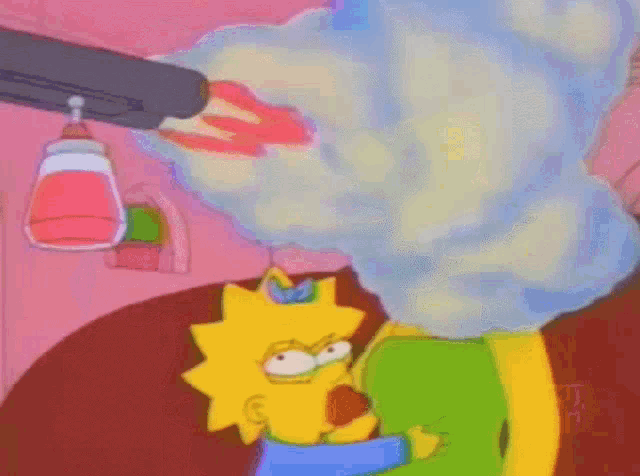If You Think About It, Paris Is The Main Character Of ‘Emily In Paris’
Emily sucks, but they made Paris even worse.

In many ways, New York could be considered the fifth main character of Sex and the City, or so it keeps being said.
It’s the classic gag about Sex and the City, that not so much lampoons Sex and the City itself, but imitates a newly born and easily parodied kind of pop-culture criticism that rose up around the same time as the show. It didn’t begin as a joke, but as a legitimate critical recognition of a cultural moment, as a pop-culture take.
That’s right, the titular city itself is a character, and we’ve never really recovered from the idea.
‘People have said it was the fifth character,” said Michael Patrick King, one of the SATC’s executive producers, in a New York Times article from 2004, released to coincide with the show’s sixth and final season. ”We’ve been East Side, West Side, all around the town, literally. We filmed so much in the city that I can walk down a street and say, in one block, ‘This is the place where Steve married Miranda,’ or, ‘This is where Samantha met Mr. Cocky.”’
New York itself changed from having itself reflected through the syrupy pink Cosmopolitan lens of SATC — now locals roll their eyes at tourists lining up to go to the cupcake bakery the show made famous, or tour past the real apartments that the characters lived in, or even the sex toy store where Charlotte brought a particular type of vibrator.
It wasn’t the “real” New York, probably — but the representation, the character that SATC presented as NYC probably became even more recognisable to the show’s many millions of fans who might never have actually visited the real city. And then the show kinda made it real, or at least real enough, that there were physical places to see, echoes from the show that bounced into the real world and stayed there.
The idea gained so much traction, became so ubiquitous as a concept in criticism, that now it’s a shorthand joke — in many ways, the fifth main character from Game of Thrones is the throne itself. In many ways, the actual new girl in New Girl, is Winston? Some might consider the main character of Chernobyl to be Chernobyl itself. It doesn’t really matter.
But it is funny when you consider how outrageously true both the lens and the gag work for Darren Star’s (the creator of Sex and the City, Younger, Beverly Hills 90210, etc) latest show, Emily In Paris.
In Emily in Paris, we might as well consider the city as a character — all the actual human characters who Emily meets are an awkward, cobbled together Frankenstein of outrageous French stereotypes and rom-com tropes, a blurry watercolour of a beret and a croissant. Paris actually manages to somehow be a more compelling and constructed character than anyone, mostly because it doesn’t have any dialogue to butcher.
Emily posts this pic on her Instagram and gets 20,000 new followers. #EmilyInParis pic.twitter.com/T5gKjA54BI
— Danny Pellegrino (@DannyPellegrino) October 4, 2020
Paris, as you may expect, is absolutely one of the main characters of the show.
But unlike the sickly sweet NYC presented in SATC, or even the glam big money publishing New York of Younger, the titular Paris in Emily In Paris is absolutely deranged. An upsetting last-minute cosplay of a city, a real Marge wearing the plastered monstrosity of Homer’s makeup gun. It’s the ‘Monkey Jesus’ of fictional cities, a botched restoration job that took a work of art and made it hilarious.

The conceit of Emily In Paris, which has been labelled as a show that is both “truly terrible” but also one that you “cannot stop watching” — is about a Chicagoan marketer in her early twenties named Emily, who seems to magically get transferred to Paris in order to bring her skills to the more European markets of fashion and perfume and culture.
It’s meant to be a fish out of water narrative — Emily flails and fails to adapt to the tres’ confusing ocean of glamorous Paris, until the French learn the error of their ways and are inexplicably charmed by her. And she’s definitely fishy enough — she doesn’t speak French, she’s prudish and judgemental, and she’s outrageously American, in all the worst ways. The only way in which she perhaps fails in this role and fits into Parisian life is that she’s effortlessly stylish, seemingly due more to the show’s lauded costume designers than any real character trait.
But the fish in the fish out of water narrative is meant to be recognisable, meant to be the protagonist that we as the audience relate to. We’re meant to also be fish. But Emily doesn’t provide that — her kind of stubborn stupidity and painful unearned confidence is really hard to watch. Everyone wants her to learn French, and nobody sympathises that her idea for branding perfume like an unethical pharmaceutical marketing scam isn’t taken on board by her new boss.
This is the entire plot of Emily In Paris pic.twitter.com/d4tAqmL0aY
— Patrick Lenton (@PatrickLenton) October 7, 2020
And as a result, the strange world that she jumps into — Paris — is made less strange. Suddenly, we realise that it’s the fish that’s the problem, not the fact that she’s out of water. The trope is inverted — Paris seems strange, in a fourth-wall breaking way, in a way that’s unsympathetic to Emily, and makes you feel bad for the entire nation of France.
It’s not quite ALL stereotype — they stop before it’s all striped mimes with baguettes in the baskets of their imaginary bicycles — but they get close, and it is a bizarre approximation, built somewhere between trope and fantasy, and settling awkwardly in between.
A lot of this comes from the fact that Paris is as equally storied, equally famous as New York City (maybe even more so, certainly in historical terms), so it’s equally as weighted with pre-loaded ideas like SATC was, with recognisable symbols. The Eiffel Tower (called one of the “most recognisable structures in the world”) makes as equally cute a backdrop as the Empire State for a throwaway romantic liaison, the boulevards as traversable as the city grid. They even filmed Emily in Paris in France, meaning that you feel the show aimed somewhere in the vicinity of authenticity.
But unlike New York, Paris is absolutely seen from an outsiders perspective, and it’s a huge part of what makes the show so infuriating, cringeworthy, and embarrassing to watch. A good example is that Emily’s meet-cute with her extremely attractive French neighbour is her complete and utter inability to work out how floors “work” in Paris, and because of this, keeps counting incorrectly and accidentally trying to get into his apartment.
It’s hard to watch — notably because it’s sold as a massive quirk of “being in Paris”, but in reality, the USA is one of the only countries who DON’T use that system of counting floors.
emily in paris is so cliche yet so addicting like yes mademoiselle oui oui baguette
— blonde (@thejennaprint) October 2, 2020
The way that the clueless American eye of both Emily and presumably Star warp Paris into something almost Disney-fied, feels less deserved than when it’s done to NYC in SATC. There’s a sense comradeship perhaps — New York gave birth to its own horrible SATC version of itself in a way. Paris, through Emily in Paris, feels put upon, an undignified situation, like if Downton Abbey had a neon sign proclaiming “that famous old house” or “grand old dames here”.
They project all the sore-thumb energy of a tourist onto the city. Whereas the girls from Sex and the City were locals, and they projected a love, and ownership (even if misguided) over New York City. They were the ones sneering at outsiders — such as the episode where they decide any woman wearing a scrunchy would never be a New York local.
The French, of course, feel that indignity.
“The berets. The croissants. The baguettes. The hostile waiters. The irascible concierges. The inveterate philanderers. The lovers and the mistresses. Name a cliche about France and the French, you’ll find it in Emily in Paris,” said a French critic from 20 Minutes.
“It reduces the capital’s inhabitants to vile snobs sporting Birkin handbags who light up a cigarette the minute they’re out of the gym,” complained another from MadmoiZelle.
But perhaps any representation of Paris on TV is too hard — could we all be suffering from a form of Paris Syndrome, a psychological condition experienced almost exclusively by Japanese tourists who are disappointed when the city of lights does not live up to their romantic expectations?
“The syndrome, considered an extreme case of culture shock, causes symptoms such as an acute delusional state, hallucinations, anxiety, dizziness, and sweating, has been documented by medical journals.”
It’s kinda how this show makes me feel to be honest.
Me criticizing #EmilyInParis: No plot, flat characters, feels outdated even though it's set in 2020.
Also me: pic.twitter.com/59guNZnKVZ
— MagicalReads (@MagicalReads) October 4, 2020
There’s an uncanny valley situation going on here, a différance, an awareness that Paris has been reprinted so many times that it bears almost no resemblance to the original, to reality, a facsimile of a facsimile, that makes you feel super uncomfortable and ill at ease.
Paris and Emily are both the main characters of this show — they are both depicted as annoying, strange cultural parodies, weird upsetting homunculi that exist nowhere outside of the fevered imagination of the world’s smoothest brains. They both don’t understand each other, but couldn’t exist without the other — there wouldn’t be this strange shadow-Paris without Emily, and without Paris, Emily wouldn’t be “in” something, and would simply cease to exist.
Patrick Lenton is the Editor of Junkee. He tweets @patricklenton. In many ways, he is the main character.

